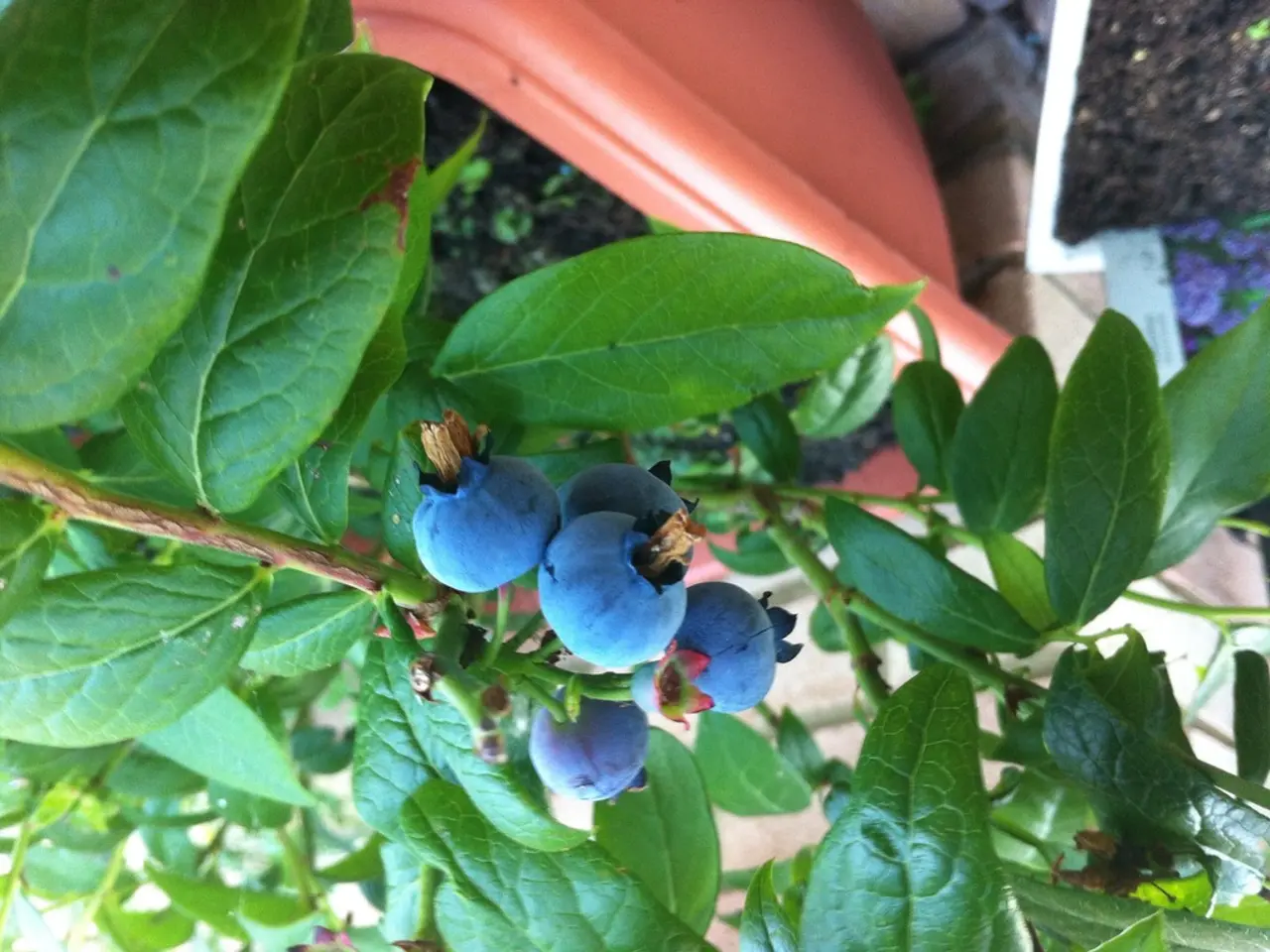Blueberry Fertilization Timeline in Georgia: A Crucial Guide for Each Season
Blueberry plants thrive in Georgia's climate, but their growth requires careful attention to soil acidity and timely fertilization. Here's a guide to help you nurture your blueberry plants for optimal results.
Timing Fertilization
Blueberry plants should not be allowed to fruit in their first year after planting. Instead, focus on promoting healthy growth through proper fertilization. Fertilization usually begins in early spring as the plant breaks dormancy and new growth starts. Additional light feeding can occur throughout the growing season as necessary, but avoid heavy fertilization late in the season to prevent encouraging late growth that could be damaged by frost.
Choosing the Right Fertilizer
Blueberries require acidic soil with a pH between 4.5 and 5.5 for optimal growth. Fertilizers formulated specifically for blueberries or other acid-loving plants are ideal. Commonly recommended fertilizers are ammonium sulfate or fertilizers labeled for acid-loving plants, as they both support acidity and provide nitrogen. Slow-release fertilizers are beneficial to provide a steady nutrient supply without risk of burning the roots.
Incorporating organic matter, such as compost or composted manure, improves soil health and nutrient availability. Phosphorus and potassium should be applied based on soil test recommendations from the University of Georgia Cooperative Extension for best results. Soil testing is crucial to determine exact nutrient needs and pH adjustments.
Application Methods
Fertilizer can be applied by spreading evenly on the soil surface beneath the plants and lightly raked in. Alternatively, digging small holes 6 inches deep and 12-18 inches apart around the root zone and placing fertilizer in these holes improves nutrient access. After fertilization, watering well and adding a layer of mulch or compost helps retain moisture and slowly release nutrients.
Ongoing Care
Proper pruning is essential for blueberry bushes, removing old canes and promoting new growth in late winter or early spring before bud break. Thin out the center to allow light penetration and air circulation. Regularly monitor blueberry plants for signs of nutrient deficiency or excess, adjusting the feeding strategy based on observations.
For young plants under two years, a second application of fertilizer in early summer can be beneficial, using slow-release fertilizers like ammonium sulfate. In fall, apply another layer of mulch to insulate the roots from cold weather and prune any dead or diseased branches to reduce risks of infections during the wet season.
During summer, watering becomes critical as blueberry plants have shallow roots. Deep watering at least twice a week, or using an irrigation system, can help maintain consistent moisture levels. In Georgia, choose Rabbiteye, highbush, or southern highbush blueberry varieties. Compost and pine bark mulch are great for improving soil structure and fertility.
Fertilization Tips
- Conduct a soil test to check the pH and adjust it if needed by adding sulfur or organic matter.
- Water the plants well after mulching, ensuring they receive at least 1-2 inches of water per week, especially in the first growing season.
- Urea fertilizer is great for providing nitrogen but should be used carefully to avoid overfertilization.
- Supplemental feeding is beneficial during periods of rapid growth, using a foliar spray for quick nutrient uptake.
- After planting, mulch around each bush to retain moisture and keep weeds at bay.
Expert Advice
Glen, a gardening expert with over 15 years of experience in garden maintenance, design, and landscaping services, shares valuable insights on blueberry care. His latest posts include "Garden Fungicides: Essential Tips for Disease-Free Plants", "When to Pick Candy Cane Peppers: Optimal Harvest Time Guide", and "When to Pick My Watermelon: A Gardener's Guide".
Precautions
Overfertilization can cause harm to blueberry plants, leading to root burn and nutrient imbalances. Always follow the recommended rates and monitor plant health. Fertilize blueberries in early spring and right after harvesting for the best results. Use a balanced fertilizer as directed when planting and after harvesting.
Plant blueberries in early spring, spacing them 4-6 feet apart. In early spring, usually around March, apply the first dose of granular fertilizer, such as 10-10-10 or 12-4-8, evenly around the base of the blueberry plants, avoiding direct contact with the stems.
With these tips, you're now equipped to care for your blueberry plants in Georgia and enjoy delicious, home-grown berries!
Nurture your blueberry plants in Georgia for a successful home-and-garden productivity by practicing proper fertilization techniques. Specifically, proceed with fertilization during early spring and after harvest, using fertilizers tailored for acid-loving plants, such as ammonium sulfate. Additionally, implement a lifestyle focused on regular soil testing, watering, pruning, and utilization of organic matter like compost to sustain the lifestyle of your blueberry bushes.




